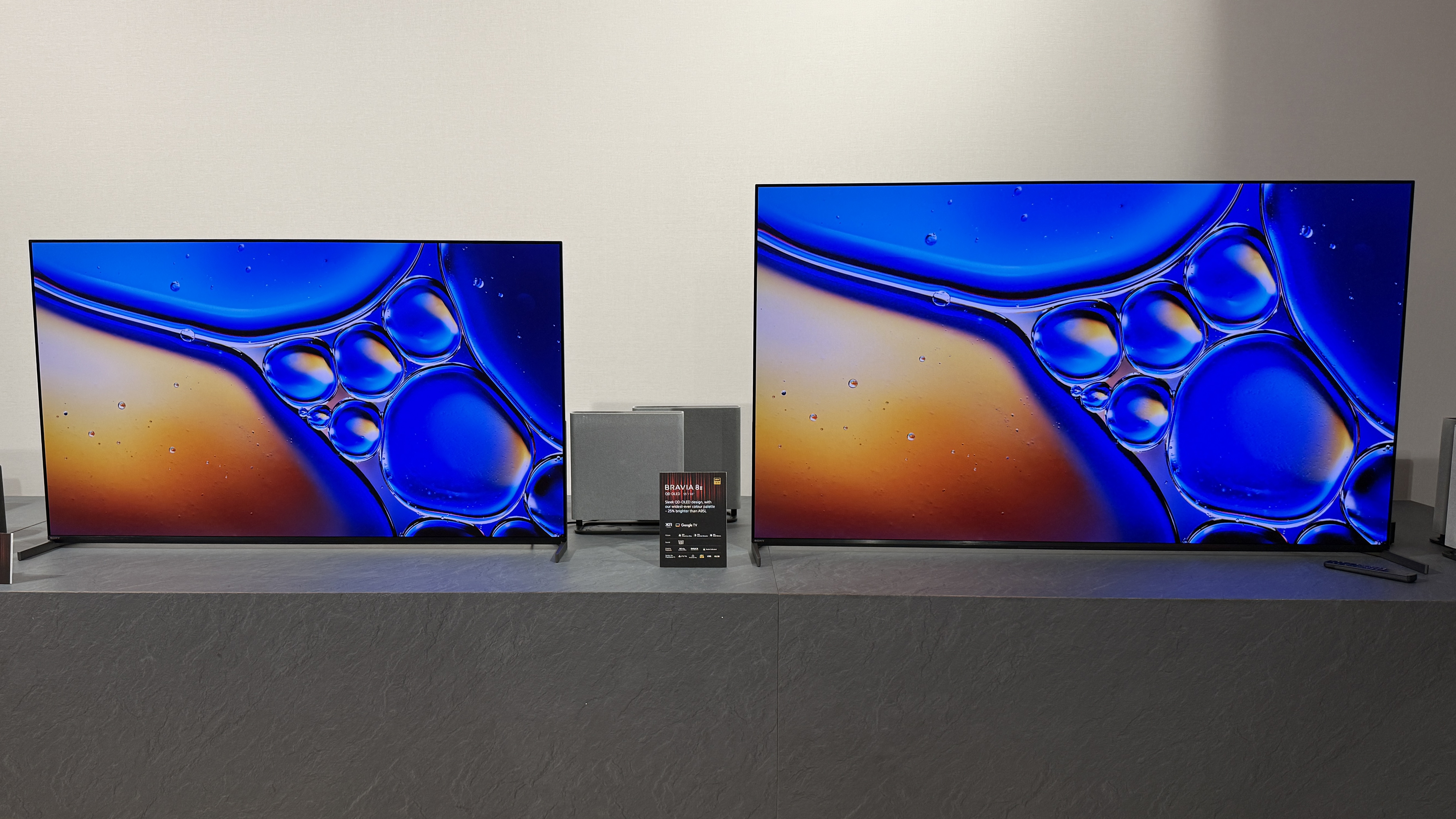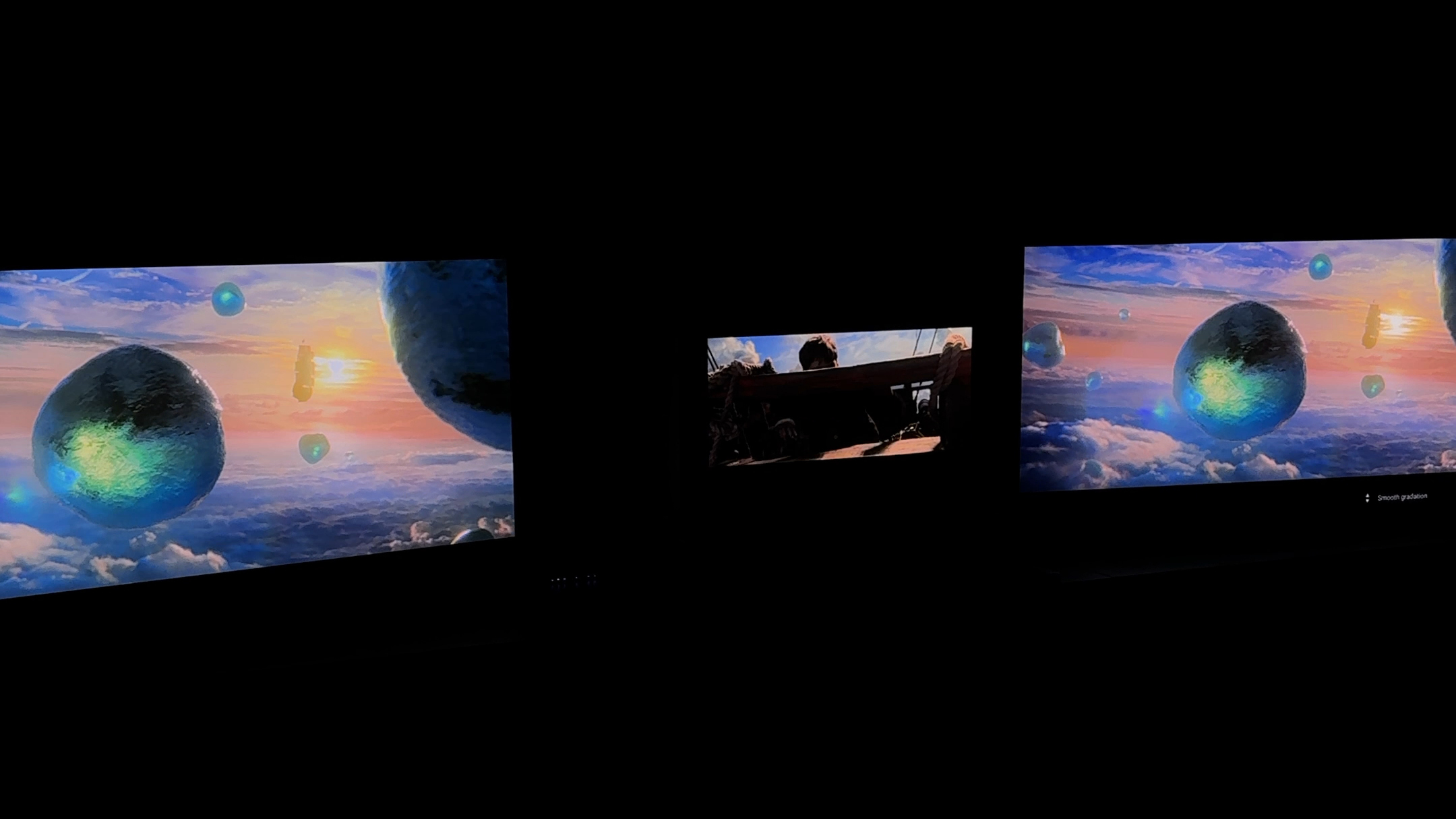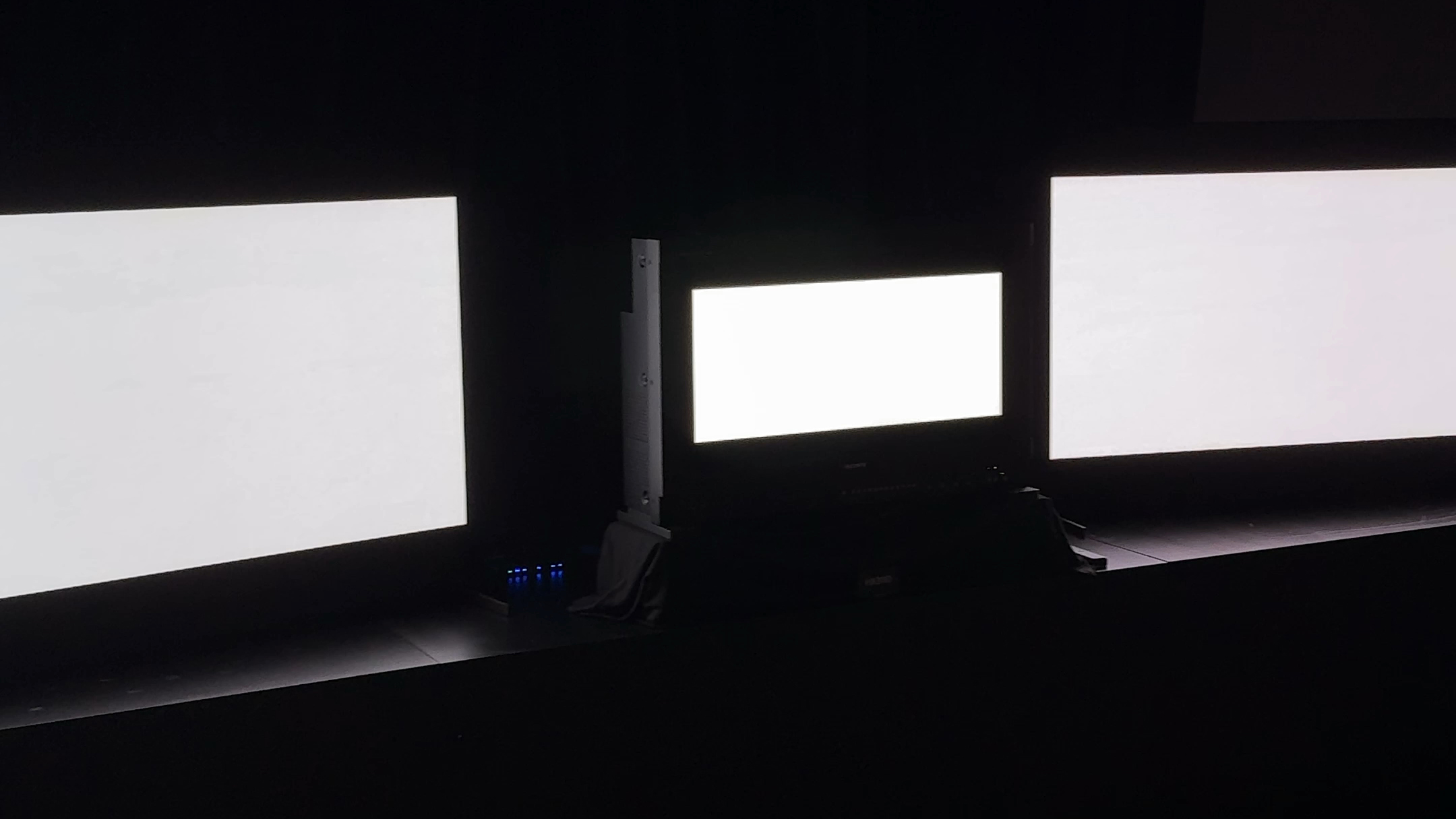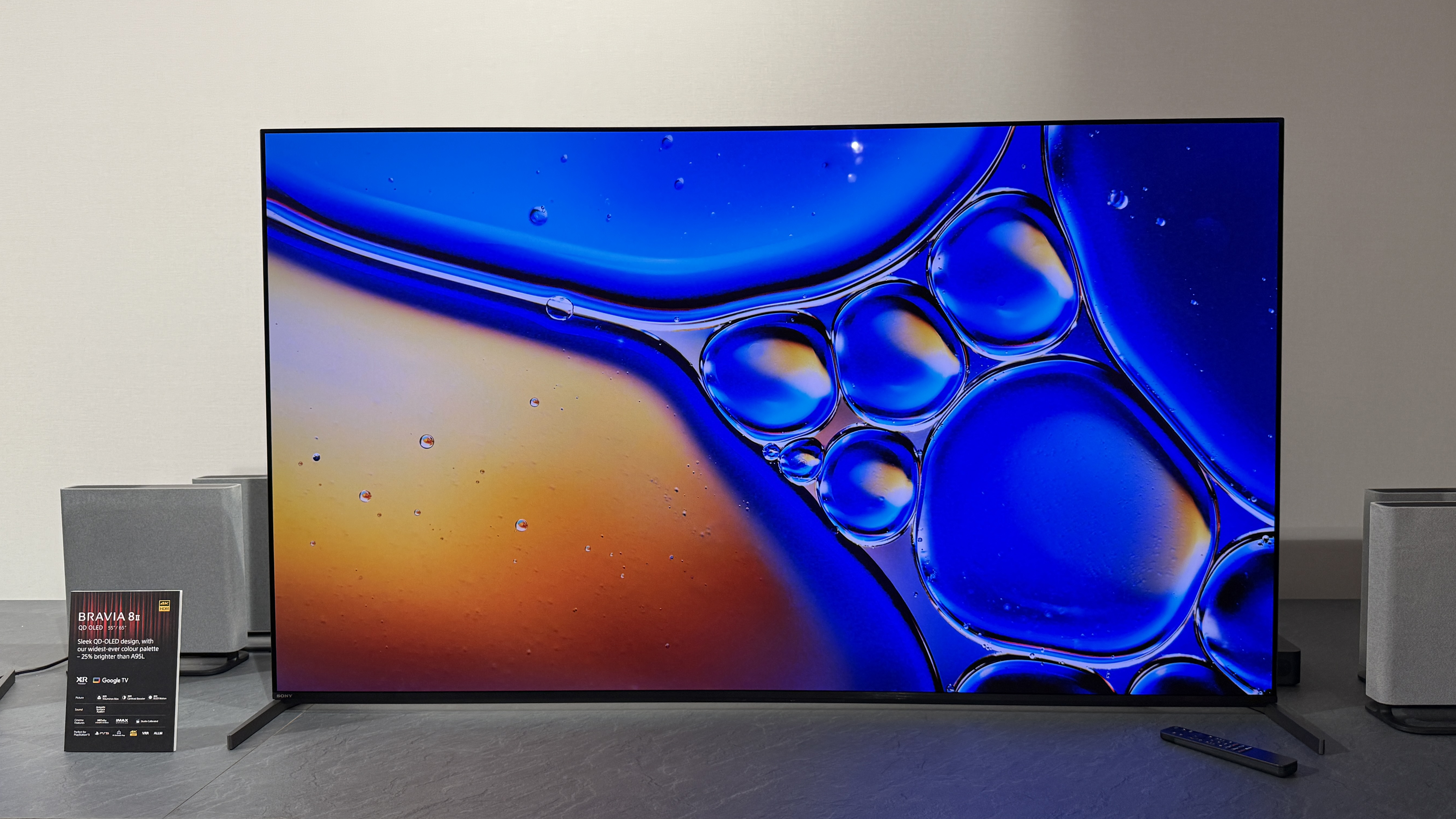I saw Sony's new top-end OLED TV in action, and it could take image refinement to a new level, for cheaper than the A95L
The Sony Bravia 8 II could be a QD-OLED masterpiece

Sony has unveiled the new TVs coming to its range in 2025, and probably the juiciest is the Sony Bravia 8 II – the confusingly named follow-up to both the Sony Bravia 8 mid-range OLED and the high-end Sony A95L QD-OLED.
Sony hasn't revealed prices yet, but said that it'll be cheaper than the A95L was, despite also being a QD-OLED TV, using the latest-gen panel (as found in the Samsung S95F).
It will come in 55-inch and 65-inch sizes only, but the 77-inch Sony A95L will stick around as the larger-screened option (Sony declined to say why it was taking this approach).

Using the new-gen panel means it'll be brighter than any previous Sony OLED to date, and should have richer colors. It'll also be only way to get the highest-end QD-OLED screen with a glossy finish, rather than the matte Glare-Free 2.0 finish used on the Samsung S95F.
Sony hinted that a peak HDR brightness of around 2,500 nits should be possible in real-world tests, which lines up with what we've seen from the S95F so far, though I wasn't able to confirm this in my demo.
But with the new panel and Sony's latest image processing on board, the difference here is not about pure brightness, but about how it's used – which has always been Sony's forté.
I saw a lengthy comparison between the Sony Bravia 8 II, the Sony A95L and Sony's 4,000-nit professional studio monitor, which is basically the best in the business for showing how things 'should' look.
Get daily insight, inspiration and deals in your inbox
Sign up for breaking news, reviews, opinion, top tech deals, and more.

You can see the fundamental difference I noticed in the panels in the image above, focused on the ship flying out of the sun. This movie, Pan, is mastered at 4,000 nits, so is capable of going harder than the panel is. It's also not in Dolby Vision, so the tone mapping from the movie's maximum brightness to the panel's brightness is handled by the TV itself.
On the left is the A95L, where the sun has lost tonal detail and is overcoming the clouds in front of it. On the right is the new Bravia 8 II, which has retained the nuance in all that, seemingly through superior tone mapping and brightness refinement, in combination with the new screen.
I also found that colors looked a little different on the new model – a little more saturated, but also perhaps with a slightly different (a touch more red) tone to them – but I'm reserving judgment on that because we felt we needed to calibrate the A95L by eye due to a minor technical issue (an easy task when you have the pro monitor right next to it…), so weren't necessarily comparing like-for-like color settings between the two TVs.
I also expect a fullscreen brightness boost, and you can see that definitely exists in the white screens below, though it didn't jump out during my time actually watching movies.

In the time I had with it, motion looked great, details looked natural and sharp, and colors definitely had a lot of pop. But that was all true of the A95L as well.
If you're thinking 'The difference looks very subtle there', then… yep! But Sony's target for its TVs for years has been the people who really care about the small improvements – the most refined look.
The Bravia 8 (original flavor), for example, isn't as bright as the competition, but the processing and HDR management are second to none, so while that TV didn't stand up to viewing in a bright environment, it looked incredible when the light is controlled.
This could really end up being the connoisseur's high-end OLED of choice – though we've got the LG G5 in our test rooms right now, so there's hot competition.
What else you need to know

Other useful information about the Bravia 8 II is that it has Sony's usual great Acoustic Surface Audio+ speakers built in, which outperform most other OLED TVs.
For gaming, there's 4K 120Hz support with variable refresh rate, 'Perfect for PS5' features including custom HDR tone mapping, and PlayStation Remote Play built-in, so you can play your PS5 that lives in the office from the TV in the living room.
However, it still only has two HDMI 2.1 ports (out of four ports total), like all previous Sony TVs. I've written before about why this is the case despite new chips that support four HDMI 2.1 coming on the market, but the short version is: companies are having to choose between high-end image processing or four HDMI 2.1 ports (except LG and Samsung, which use custom alternative solutions).
Google TV is still the smart TV software.
The Bravia 8 II is coming in above the Bravia 8 in Sony's range, and that model is sticking around. The Sony Bravia 9 mini-LED TV technically sits above the Bravia 8 II in Sony's range, but that also only comes in larger sizes (the Bravia 9 was originally 75-inch and 85-inch only, but added a 65-inch version in Europe after launch).
If the Bravia 8 II can hit the same kind of prices as the LG G5 and Samsung S95F – rather than coming in significantly more expensive, like the A95L did – then we could be onto something very special here when it comes to picture quality.
Pricing and a release date are due to be announced at some point in the next few months – when we know those, and we can get this in our test rooms, we'll find out if it's really as good as it appears.
You might also like…
- I tested Samsung's new top mini-LED 4K TV, and the Glare-Free screen tech makes a big difference
- Forget Samsung's new modular OLED panels – if this tech works on TVs we could get giant OLED TVs at half the price
- 5 things I learned when I tested the LG C5 OLED TV, from embracing AI to troublesome reflections

Matt is TechRadar's Managing Editor for Entertainment, meaning he's in charge of persuading our team of writers and reviewers to watch the latest TV shows and movies on gorgeous TVs and listen to fantastic speakers and headphones. It's a tough task, as you can imagine. Matt has over a decade of experience in tech publishing, and previously ran the TV & audio coverage for our colleagues at T3.com, and before that he edited T3 magazine. During his career, he's also contributed to places as varied as Creative Bloq, PC Gamer, PetsRadar, MacLife, and Edge. TV and movie nerdism is his speciality, and he goes to the cinema three times a week. He's always happy to explain the virtues of Dolby Vision over a drink, but he might need to use props, like he's explaining the offside rule.
You must confirm your public display name before commenting
Please logout and then login again, you will then be prompted to enter your display name.